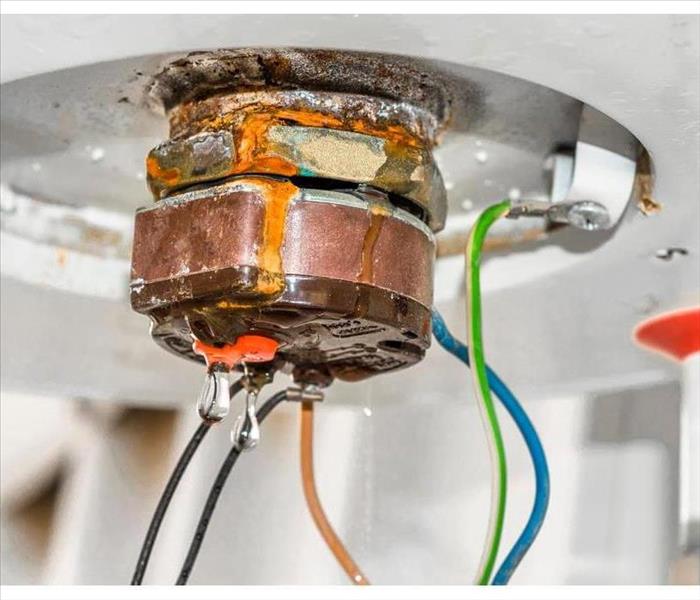What Happens During Water Heater Cleanup
1/30/2022 (Permalink)
Water Heater Cleanup
Most water heaters are stored in a convenient space out of everyone’s way, either in a basement, closet or garage. While this is great when it comes to floorplan layout, it can be inconvenient if you have a leaking water heater. The time it takes to clean up after a broken water heater depends heavily on where it’s located. Here’s a look at what happens during a water heater cleanup.
1. Complication Assessment
The first thing that your water cleanup specialist is going to do is figure out how difficult of a remediation job it’s going to be. If a failed water heater has flooded part of your home, professionals will be able to figure out the easiest and best way to clear the water and restore the damage.
2. Water Extraction
The water has to be taken out quickly. Mold growth is more rampant in warm and wet areas. The warm water is perfect for the growth of bacteria. When it comes time to remove the water, you can’t simply soak it up or use a sump pump to extract it. There may be more moisture than you can see. A professional has to draw water from the walls and the carpets. This can be done with pumps, vacuums, and dehumidifiers.
3. Home Disinfection
If your leaking water heater is out of sight and out of mind, it’s possible that you won’t realize that it flooded your basement or garage. In this case, there could be time for mold to grow. Cleanup and disinfecting have to come next. Scrub walls and non-porous surfaces with a strong formula of detergent, water, and vinegar.
When it comes to a leaking water heater, it’s important that you never ignore it. While any type of flood in your Troup, TX, home can seem overwhelming, the water mitigation process is uncomplicated with the help of a remediation professional.



 24/7 Emergency Service
24/7 Emergency Service
